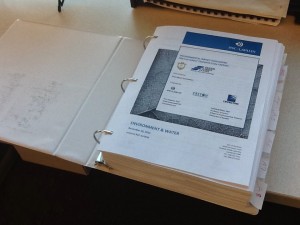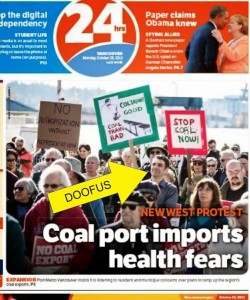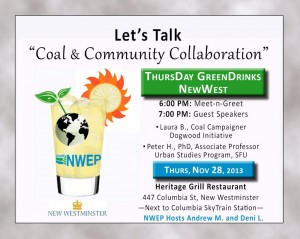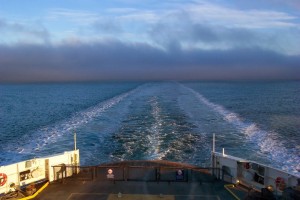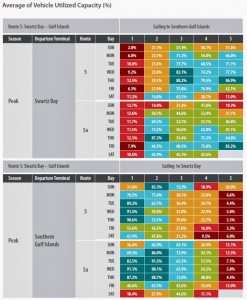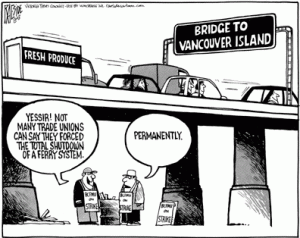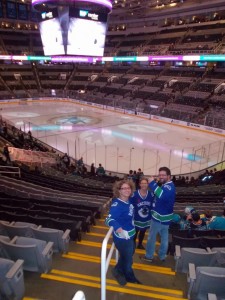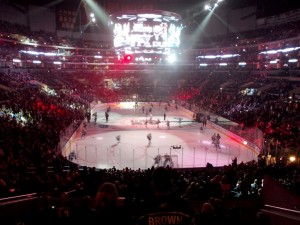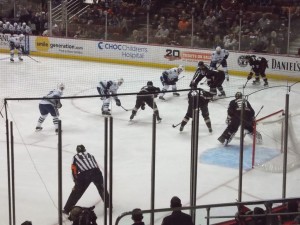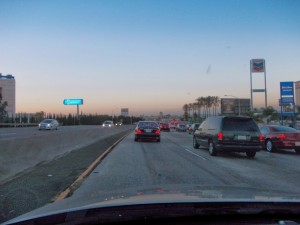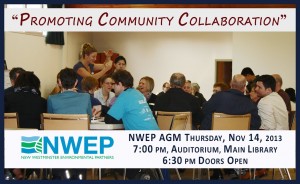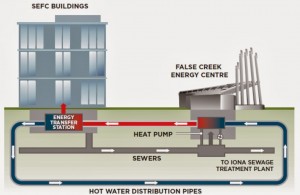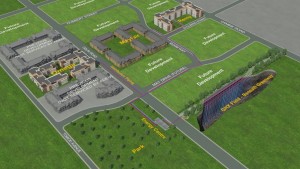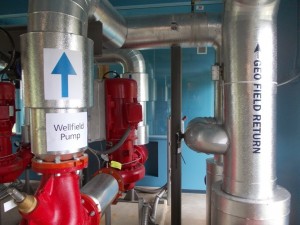Responsibility is a big word. It is something that some of us take on gladly, something others avoid like a plague. At the worst, it is often given to people who choose to wield it like a hammer until the time when they start pretending they don’t have it. Once the journey down that path begins, the results can be akin to a train wreck. This has been a week of responsibility-shirking train wrecks.
At the federal level, we were treated to a spectacular display at the Harper Party of Canada convention. After a few weeks of spiraling controversy that seems to be closing in on the big desk in the Prime Minister’s Office and in which Harper has taken repeated body blows from Mulcair in the House, he stood in front of the Party Faithful to give a much-anticipated speech. Instead of addressing the issue, he avoided it completely, and only talked about how everything in Ottawa is tickety-boo except for a few trouble-making Senators whose name he hardly remembered. A review (in the very Conservative National Post) of the speech from (the very Conservative) Andrew Coyne is one of the most spot-on analyses of Stephen Harper ever written.
The entire point is that Stephen Harper, who has so single-handedly ruled for the last few years that his name has replaced Canada’s in official Government media and has honed to a sharp point the PMO-centric governance model already polished by Jean Chrétien, is now claiming he knew nothing of several secret deals to compensate a Senator for paying back illegally-claimed entitlements, although the plan was cooked up in his office by his closest advisers. It doesn’t matter that he was, ultimately responsible, he is claiming no responsibility. Someone else is to blame.
Then we have the situation in Toronto. As Rob Ford’s constantly-shifting defenses (there is no video, It’s not me in the video, I’ve never seen the video, no-one knows what that is I’m smoking in the video, I might have made a mistake being filmed in that video) do little to build his credibility. However, despite the various strange stories around the phantom video – arrested drug dealers, dead informants, police investigations – the Mayor seems to think this is all a vendetta against him by a newspaper, or the Left Wingers, or his Police Chief, or his driver/dealer, or someone. Deep in denial, he rails against those who might suggest that maybe some part of the current situation might be a result of his actions. Someone else is to blame.
At a different scale, and very locally, the presumed-still-official President of Hyack wrote a letter to the local papers last week that that offers a different view on the Hyack fiasco, a view that differs from that previously offered to the public, or even to members of Hyack.
Unfortunately, many of these points only serve to make the situation more muddy. For example:
“Most directors of the Hyack board were aware of the numerous points the executive committee were working with when preparing an ‘employee review’ for Douglas Smith, the former executive director, prior to his departure. The immediate past president was the board member who did not allow the committee to present their findings to the board on July 30, after he raised an ‘incorrect’ point of order, which abruptly ended the meeting and prevented the board from considering all of the evidence available to it.”
First off, this is a perfectly reasonable explanation of why the Board did not approve the removal of the ED, but it does not explain why the ED was removed without the approval of the Board. That the Board was “aware” that the Executive wanted him removed is not in dispute, what is in dispute is whether the Board was required to approve of it, and if there was just cause for dismissal. Even if just cause was presented, was there a plan to deal with potential legal or financial issues that would arise from terminating the contract? If just cause was not present, what would be the result of the ensuing legal action? In my (usually) humble opinion, the job of the Board would be to provide this type of due diligence before decisions are made. If the decision was made without this due diligence, who made it?
Secondly, who chaired this meeting that was caused to abruptly end due to an incorrect Point of Order? The job of chair is to manage the meeting and avoid this type of issue. One Point of Order should not a meeting destroy, or you need a new Chair.
“With respect to the Oct. 22 ‘gathering’ that 25 individuals had at the Columbia Theatre, it was not a sanctioned meeting of Hyack.”
This unsanctioned gathering was just a collection of paid Hyack Members who gathered at the time and place designated by the President in his announcement to the Members of a Special General Meeting. The majority of those members never received notice from the President that the meeting had been cancelled.
”The comments that have been made by persons at that meeting were only the opinions of those individuals and did not reflect the views or opinions of the Hyack board and the association itself.”
Every comment made at that meeting was made by a paid Member of Hyack, and a General Meeting is usually a meeting of Members, not one where comments are limited to those offered by the Board or Executive.
“A number of them were ‘brand new members’ who had been recently signed on only to further the ends of the dissident directors. These people had little independent information or knowledge or information about our association.”
As a relatively new member of Hyack, this strikes close to me. I joined a couple of months ago, in the middle of the “troubles” and at the request of a couple of Board Members. My membership fee was accepted by the Board, and it has never been suggested to me that I am second class member. I got involved in this process, and spent my own $55, because as I said at the very beginning, I really hoped that Hyack could move past this situation and continue to serve the City. I happen to agree with much of what I read in the newspaper written by Douglas Smith after his departure – Hyack had huge potential to move forward and become more relevant through strategic changes. I actually got excited about the possibilities, and thought I could contribute. My interest was only to make this organization stronger and more effective. Being a member of several not-for-profits that do good volunteer work, I have no interest in damaging one.
During my membership, I have worked with the best information I could get. I have received almost no correspondence from the President that would provide me this so-called “independent information or knowledge or information about [the] association”. If the Membership had not received this important information, isn’t it the duty of the President (who has taken pains to point out all of the people who don’t speak for the Association) to transmit that information to the members?
I have received a couple of reports from the President, mostly on the topic of recent parade-related successes in Washington State. The only official reference to the current “troubles” from the President prior to the SGM was the announcement of and rationale for the SGM, excepting these two sentences from the Presidents Report delivered October 13th:
”By now, you know we are having a Special General Meeting on October 22nd where you will be asked to make some tough decisions. The future of New Westminster’s Hyack Festival Association rests on the outcome of this very important meeting and with you, the members. I know you will make the right decisions.”
That’s it. In a 1,000-word report with photos that talked about the activities of Honourary Colonels and First Ladies in Tacoma, Leavenworth, and Issaquah, there were two sentences that obliquely referred to any “independent information” that would have allowed us Members to make the “right decisions”.
I don’t want to attack the current President personally, I honestly believe he is doing what he thinks is best, with the best intentions. However, I think this Letter to the Editor, better than anything I have seen up to this point on the entire Hyack annus horribilis, demonstrates that he cannot see the situation for what it is. Someone else is to blame.
“Rogue” Board members, Douglas Smith, city council, former sponsors, the local newspapers, 25 Hyack members who attended the SGM, the media, the immediate past president, letter writers, etc.; a myriad of dark forces are out to destroy Hyack. Now that I have written this, you can probably add me to the pile. But not once has the President ever suggested that he may have ever done anything that might require some reflection. Through all of this, no mistakes, no bad choices made in the best intentions, not a step wrong. No apologies offered for not managing this situation better.
Instead of deflecting, it is time for someone to act Presidential and take ownership of the situation. If mistakes were made or decisions look worse with the benefit of hindsight, he will be judged less by admitting to it, and apologizing. A mistake is an opportunity to learn, but first there has to be an acknowledgement. Part of Leadership is the accepting of responsibility. That may be the only path forward right now. The solution will not be found in continuing to look for someone to blame.
PS: there were a couple of other moments in the letter that I simply have to address, because they did not reflect my personal experience during the October 22nd event. I stand to be corrected, but it is my opinion that the President got some facts wrong:
“At an official special general meeting, only fully paid members are allowed to vote and only the items on the agenda can be discussed.”
That is the experience I had at the Special General Meeting. There was business to appoint a chair (as the President failed to show up), business to appoint a Secretary, and 4 resolutions, all passed. That is all that took place at the meeting, and all discussion was around that agenda, as sent out by the President prior to the meeting.
“As well, one long-time Hyack member was turned away at the door by one of the dissident directors when he attempted to enter. This was obviously not an open gathering but rather a partisan group of people with a closed agenda.”
That is NOT the experience I had at the Special General Meeting. There were many people turned away before registration for the meeting began, but they were sent home by a representative of the President who, when I arrived, was telling people to go away as the meeting had been cancelled (then he did not stick around to sign in for the meeting). When two dozen people decided not to go away, but to await the arrival of the President to ask him questions, it became apparent the President was not going to arrive. At that time, the doors were opened, and registration was taken, to assure names of each participant was recorded (in case there was a challenge about membership status). I witnessed one person being turned away, because they arrived long after the doors were sealed at 6:45 (as indicated in the agenda supplied by the President) and after voting on several resolutions had already proceeded. Turns out that person was not even a member, but hoped to sign in at the meeting.
The agenda was the one provided by the President prior to the meeting.Nothing more, nothing less.
